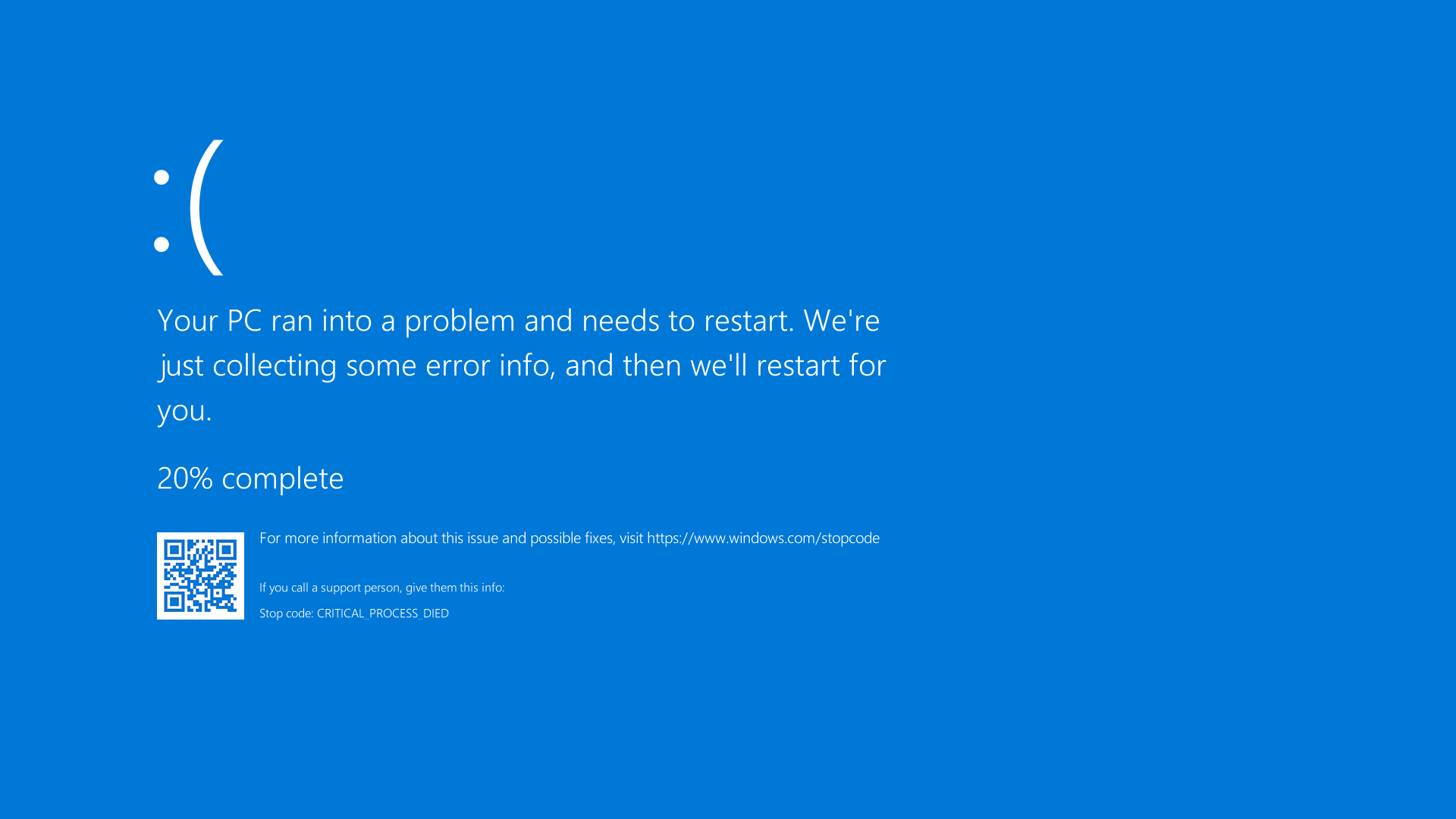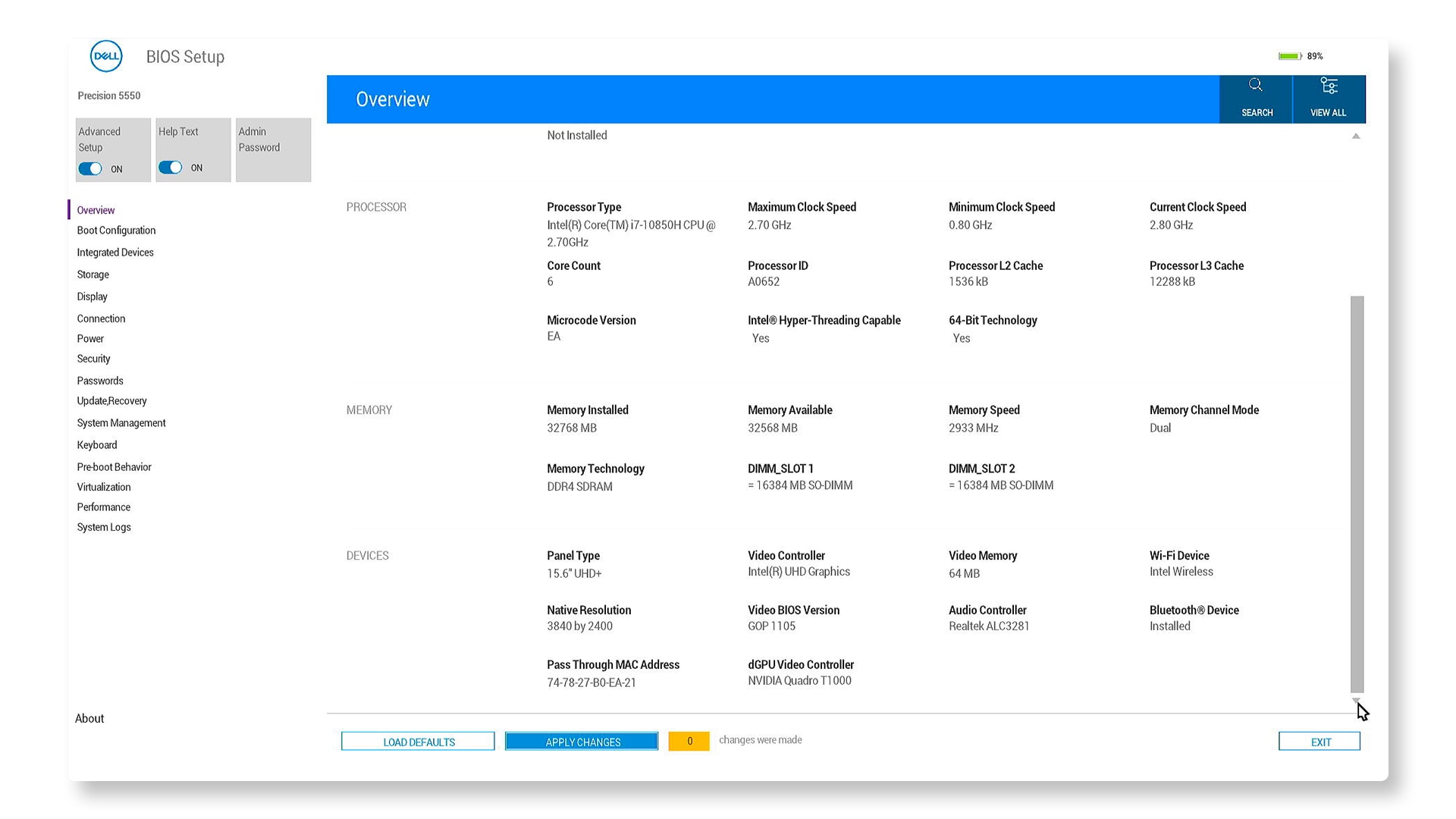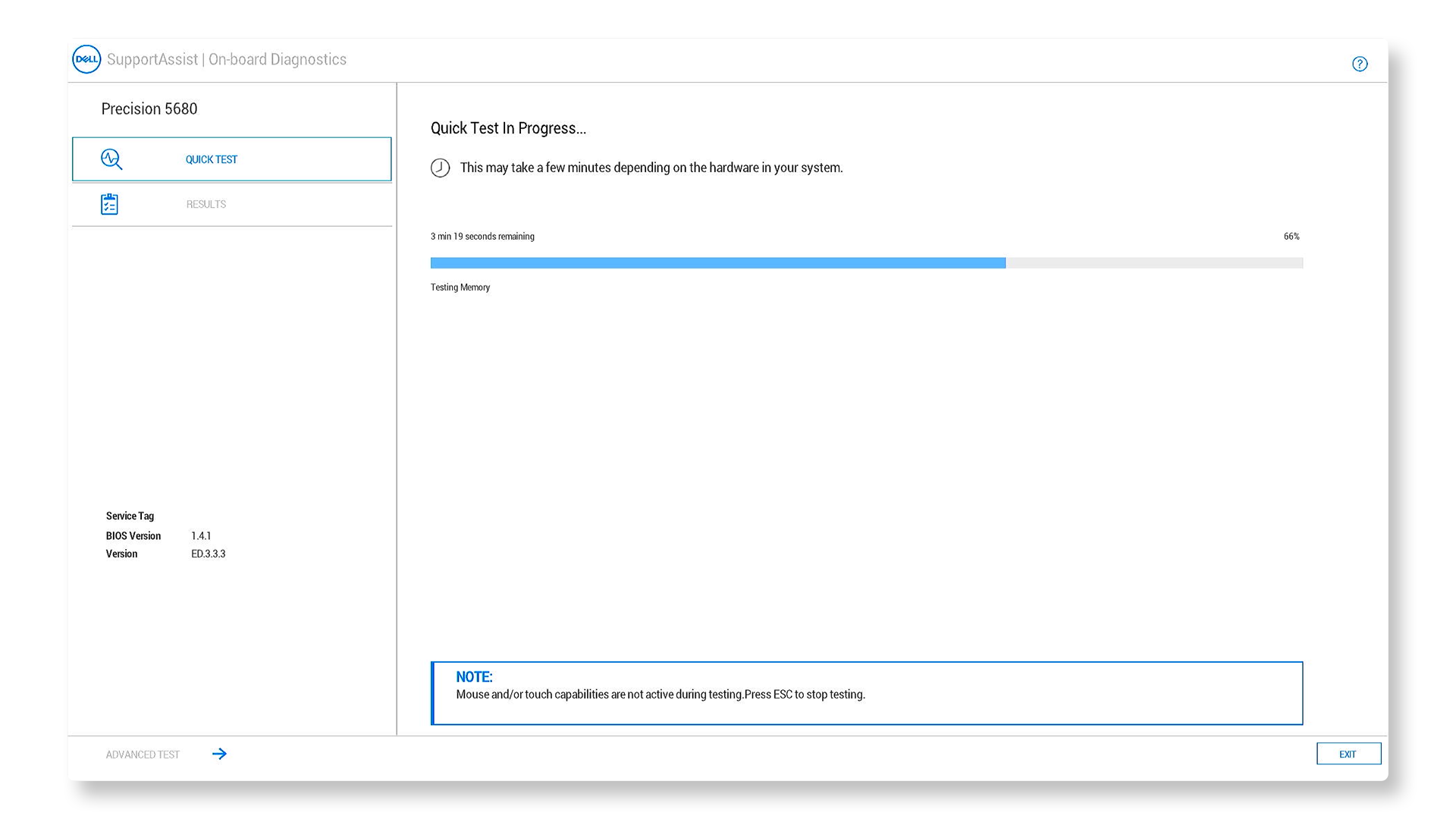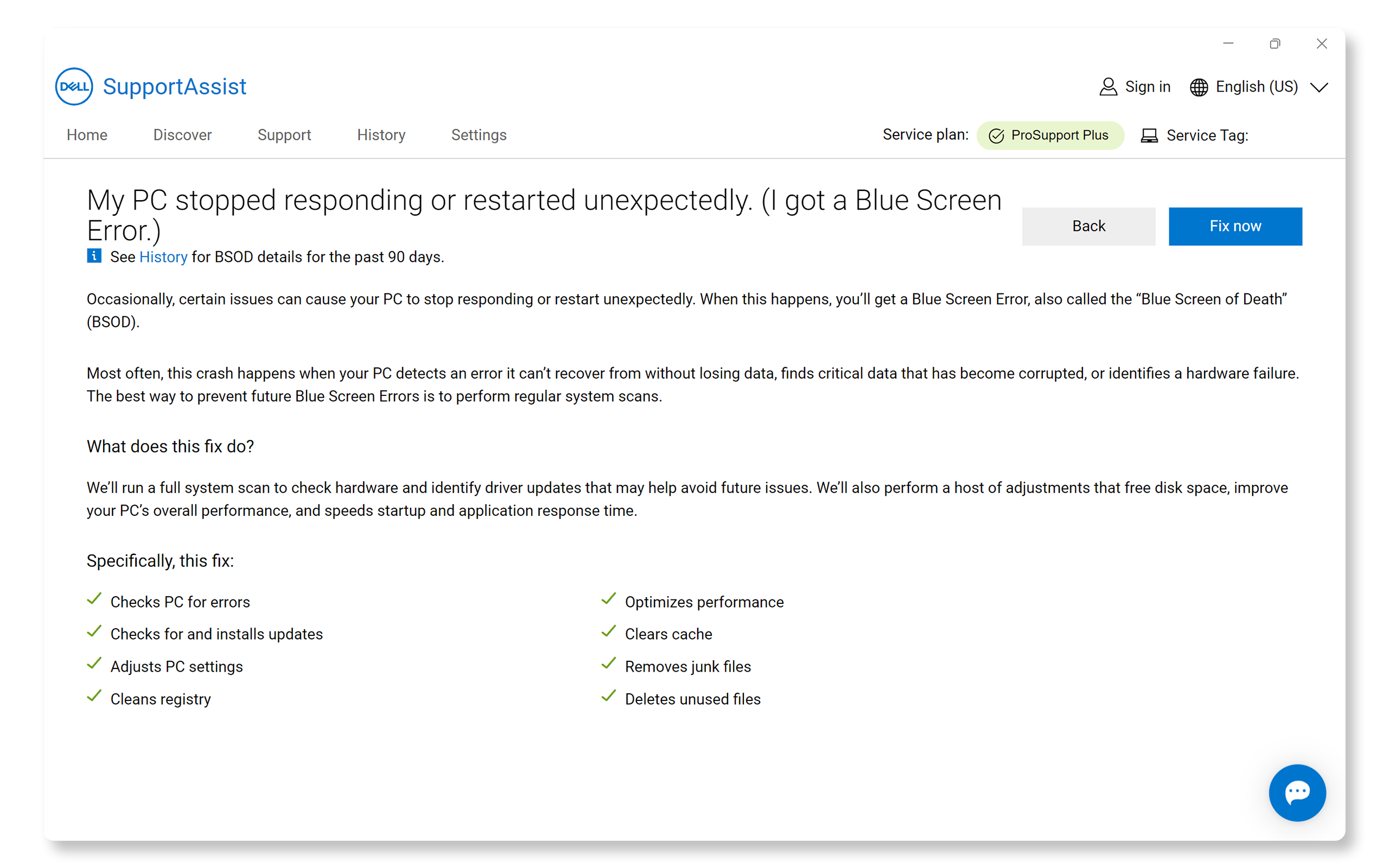Blue Screen (BSOD) Errors and Stop Code Issues in Windows
What is Blue Screen (BSOD)?
Blue Screen (BSOD) error happens when Windows encounters a critical error it can’t recover from and forces your computer to restart abruptly. This can be caused by hardware failures, driver conflicts, corrupt system files, or software problems. In Windows 10 and Windows 11, you’ll see a message that says “Your PC ran into a problem and needs to restart” with a STOP code.
What is a STOP code?
A STOP code is a hexadecimal code displayed on the BSOD screen that helps identify the specific error causing the crash. Examples include 0x0000007E or 0x00000050, and so on.
What causes a BSOD?
Blue Screens (BSODs) often happen from faulty hardware, outdated or corrupt drivers, software that doesn’t get along, viruses, or corrupt system files. Common reasons include faulty memory (RAM), damaged parts of the hard drive, old drivers, and overheating.
Common BSOD Errors in Windows 11 and Windows 10
When Windows experiences a Blue Screen error, you might see error messages like:
- PAGE_FAULT_IN_NONPAGED_AREA. STOP Code: 0x00000050.
- IRQL_NOT_LESS_OR_EQUAL. STOP Code: 0x0000000A.
- SYSTEM_SERVICE_EXCEPTION. STOP Code: 0x0000003B.
- KMODE_EXCEPTION_NOT_HANDLED. STOP Code: 0x0000001E.
- CRITICAL_PROCESS_DIED. STOP Code: 0x000000EF.
- MEMORY_MANAGEMENT. STOP Code: 0x0000001A.
- DRIVER_IRQL_NOT_LESS_OR_EQUAL. STOP Code: 0x000000D1.
- VIDEO_TDR_FAILURE. STOP Code: 0x00000116.
- INACCESSIBLE_BOOT_DEVICE. STOP Code: 0x0000007B.
- BAD_POOL_HEADER. STOP Code: 0x00000019.
- SYSTEM_THREAD_EXCEPTION_NOT_HANDLED. STOP Code: 0x0000007E.
- BAD_SYSTEM_CONFIG_INFO. STOP Code: 0x00000074.
- WHEA_UNCORRECTABLE_ERROR. STOP Code: 0x00000124.
- UNMOUNTABLE_BOOT_VOLUME. STOP Code: 0x000000ED.
- MACHINE_CHECK_EXCEPTION. STOP Code: 0x0000009C.
- DPC_WATCHDOG_VIOLATION. STOP Code: 0x00000133.
Check FAQ #1 below to learn what these errors mean. This guide provides common troubleshooting steps for any of these error messages.
Step-by-Step Guide to Fix BSOD Errors
If your computer encountered a Blue Screen error, follow these detailed step-by-step instructions to troubleshoot and resolve the problem. You may also watch this video to help fix your computer if it won't boot.
Step 1: Disconnect External Devices
Sometimes, faulty external devices can cause Blue Screen errors.
- Unplug External Devices: Remove USB drives, printers, and other peripherals (except the keyboard and mouse).
- Restart the Computer: Press the power button to see if it boots up.
Step 2: Perform a Hard Reset
Discharging residual electricity can often fix startup problems when your computer won't boot into Windows due to a Blue Screen error.
- Turn Off the Computer: Hold the power button until the computer shuts down.
- Disconnect the power source: Unplug the power cable or remove the battery if it’s a laptop (removable batteries only).
- Hold the Power Button: Press and hold it for 15-20 seconds to drain any residual power.
- Reconnect the Power Source: Plug in the power cable or reinsert the battery.
- Turn On the Computer: Press the power button to see if it boots up.
Step 3: Reset BIOS or UEFI to Default Settings
If your computer has Blue Screen errors, it might be because of wrong BIOS settings. You can try fixing this by resetting the BIOS or UEFI settings to their original defaults.
- Restart the computer: Press the power button.
- Enter BIOS or UEFI: Press F2 repeatedly as the computer starts.
- Reset BIOS to Defaults: Look for an option to reset to default settings, usually Load Defaults or Restore Settings button.
Can't find the same options in BIOS? Check your computer's user manual for BIOS or UEFI navigation.

Step 4: Run Dell Diagnostics
SupportAssist can check your computer’s hard drive and other parts to find out what’s causing Blue Screen errors.
- Restart the computer: Press the power button.
- Enter Boot Menu: Press F12 repeatedly as the computer starts.
- Select Diagnostics: Select Diagnostics from the menu and press Enter.
- Follow On-Screen Instructions: SupportAssist Pre Boot System Assessment (ePSA on older devices) checks for hardware issues. If the test passes, your hard drive is working properly, proceed to the next step. If the diagnostic test fails, make a note of the error code, validation code, Service Tag, and then look up the error code.

Step 5: Run SupportAssist Blue Screen Troubleshooter
Use SupportAssist to run an automated repair. It will scan your computer to check for hardware problems and find driver updates that can help prevent future issues. If your computer cannot boot into Windows, go to the next step.
- Search for and open SupportAssist, then go to the Support tab.
- Under View Common Issues, select Get Started.
- Under I want to troubleshoot my PC, choose My PC stopped responding or restarted unexpectedly. (I think it was a ‘Blue Screen’ Error.)
- Click the Fix now button to let SupportAssist run an automated repair process.

Step 6: Repair Windows Startup Files
If your computer shows a Blue Screen (BSOD) and won't start Windows, try using Windows Startup Repair. It might fix the problem and help your computer start up again.
- Turn off the computer: Hold the power button until it shuts down.
- Turn on and interrupt boot: Turn on the computer. When you see the Windows logo, press and hold the power button to turn it off. Repeat this again. On the third try, let it fully restart.
- Access Advanced Startup Options: In the Automatic Repair screen, select Advanced Options. Your computer will enter the Windows Recovery Environment (WinRE).
- Choose Startup Repair: Select Troubleshoot > Advanced Options > Startup Repair. Follow the on-screen instructions to repair Windows startup.
- Enter BitLocker Key: If your computer is encrypted with BitLocker, enter the recovery key when asked. You can find the key by logging into your account at account.microsoft.com and checking the Devices section.

Step 7: Repair Windows Using SupportAssist OS Recovery
Sometimes corrupted system files can cause Blue Screen (BSOD) errors. Software repair automatically runs a conditional two-step process to find and fix boot issues. If SupportAssist is not available, try these additional steps to fix common Blue Screen errors.
- Restart the Computer: Press the power button.
- Enter Boot Menu: Press F12 repeatedly as the computer restarts.
- Select SupportAssist OS Recovery: Use the arrow keys to highlight SupportAssist OS Recovery and press Enter.
- Select Repair: On the Repair Software tile, select Repair.
- Unlock your Computer: If your computer is encrypted with BitLocker, enter the recovery key when asked. You can find the key by logging into your account at account.microsoft.com and checking the Devices section.
- Start Repair: Select Start Repair and the progress is of repair is displayed.

If your computer still won't start Windows after using the repair option in SupportAssist OS Recovery, try these additional steps to fix common Blue Screen errors.
Frequently Asked Questions
Here are some frequently asked questions about Blue Screen or BSOD errors on Windows computers.
1. What are some common Blue Screen (BSOD) errors?
- PAGE_FAULT_IN_NONPAGED_AREA. STOP Code: 0x00000050. This error occurs when Windows tries to access a page of memory that is not present. It can be caused by faulty hardware, such as RAM, or by a corrupted NTFS volume.
- IRQL_NOT_LESS_OR_EQUAL. STOP Code: 0x0000000A. This error indicates that a kernel-mode driver tried to access pageable memory at a process IRQL that was too high. It is often caused by faulty drivers or hardware issues.
- SYSTEM_SERVICE_EXCEPTION. STOP Code: 0x0000003B. This error occurs when a system service, such as a driver or a system process, causes an exception. It can be due to incompatible or outdated drivers, or software conflicts.
- DRIVER_IRQL_NOT_LESS_OR_EQUAL. STOP Code: 0x000000D1. This error is caused by a driver trying to access an invalid memory address while running at a high IRQL. It is often due to faulty or incompatible drivers.
- INACCESSIBLE_BOOT_DEVICE. STOP Code: 0x0000007B. This error indicates that Windows cannot access the system partition during startup. It can be caused by corrupted boot files, faulty hardware, or incorrect BIOS settings.
- BAD_POOL_HEADER. STOP Code: 0x00000019. This error occurs when the pool header is corrupted. It can be due to faulty drivers, hardware issues, or software conflicts.
- SYSTEM_THREAD_EXCEPTION_NOT_HANDLED. STOP Code: 0x0000007E. This error occurs primarily due to outdated, incompatible, or faulty drivers.
- WHEA_UNCORRECTABLE_ERROR. STOP Code: 0x00000124. This error is mostly due to corrupt hardware and heat or voltage issues. It can also be triggered by driver issues or faulty system files.
- UNMOUNTABLE_BOOT_VOLUME. STOP Code: 0x000000ED. This error occurs when Windows cannot load correctly from the boot drive. It is often encountered during system startup.
2. How do I find out what caused the BSOD?
- You can use the Event Viewer in Windows or Windows Debugger to analyze crash dump files. These tools provide details about the error, which can help identify the cause.
3. How do I use Event Viewer to troubleshoot a BSOD?
- To use Event Viewer:
- Type “Event Viewer” in the search bar and open it.
- Navigate to Windows Logs > System.
- Look for critical errors that occurred around the time of the BSOD.
4. What is a minidump file?
- A minidump file is a small file created by Windows when a BSOD occurs. It contains information about the crash, which can be used for troubleshooting. You can view these files using tools like Windows Debugger.
5. How do I update my drivers to prevent BSODs?
- Update drivers in Windows using Dell apps like SupportAssist, Dell Update, Alienware Update, or Dell Command Update. One of these apps should already be on your Dell computer.
6. How do I disable automatic restart on a BSOD?
- To disable automatic restart:
- Go to Control Panel > System and Security > System.
- Click on Advanced system settings.
- Under Startup and Recovery, click Settings.
- Uncheck Automatically restart and click OK.
7. What should I do if my computer keeps getting BSODs?
- If your computer frequently encounters BSODs, try the following steps:
- Update drivers and Windows.
- Check for hardware issues.
- Run a full virus scan.
- Consider resetting Windows if the Blue Screen error persists.
8. Can a BSOD damage my computer?
- A BSOD itself doesn’t damage your computer, but the underlying issue causing the BSOD can potentially harm your hardware if not addressed. For example, overheating can damage components over time.
9. Can overheating cause a BSOD?
- Yes, overheating can cause hardware components to fail, leading to a BSOD. Ensure your computer is well-ventilated and clean of dust to prevent overheating.
10. Can a BSOD be caused by a software update?
- Yes, sometimes software updates can introduce bugs or conflicts that cause BSODs. If you suspect this, you can uninstall the update or use System Restore to revert to a previous state.
11. What is the difference between a BSOD and a system freeze?
- A BSOD is a critical error that forces Windows to stop and display a Blue Screen, while a system freeze is when the computer becomes unresponsive but doesn’t display a BSOD. Freezes can be caused by similar issues but may not generate a STOP code.
12. How do I perform a clean boot to troubleshoot a BSOD?
- To perform a clean boot:
- Type “msconfig” in the search bar and open System Configuration.
- Go to the Services tab, check Hide all Microsoft services, and click Disable all.
- Go to the Startup tab and click Open Task Manager. Disable all startup items.
13. Should I reinstall Windows if BSODs persist?
- Reinstalling Windows can fix persistent BSOD issues caused by corrupted system files. However, this should be a last resort after trying other troubleshooting steps.
14. What if none of the troubleshooting steps work?
- Additional Troubleshooting: Follow these additional steps on Blue Screen troubleshooting.
- Use Dell Community Forums: Join the Dell Community Forums to get help from other users.
- Contact Dell Support: If the issue persists, contact Dell Technical Support for repair options based on your device’s warranty status.

